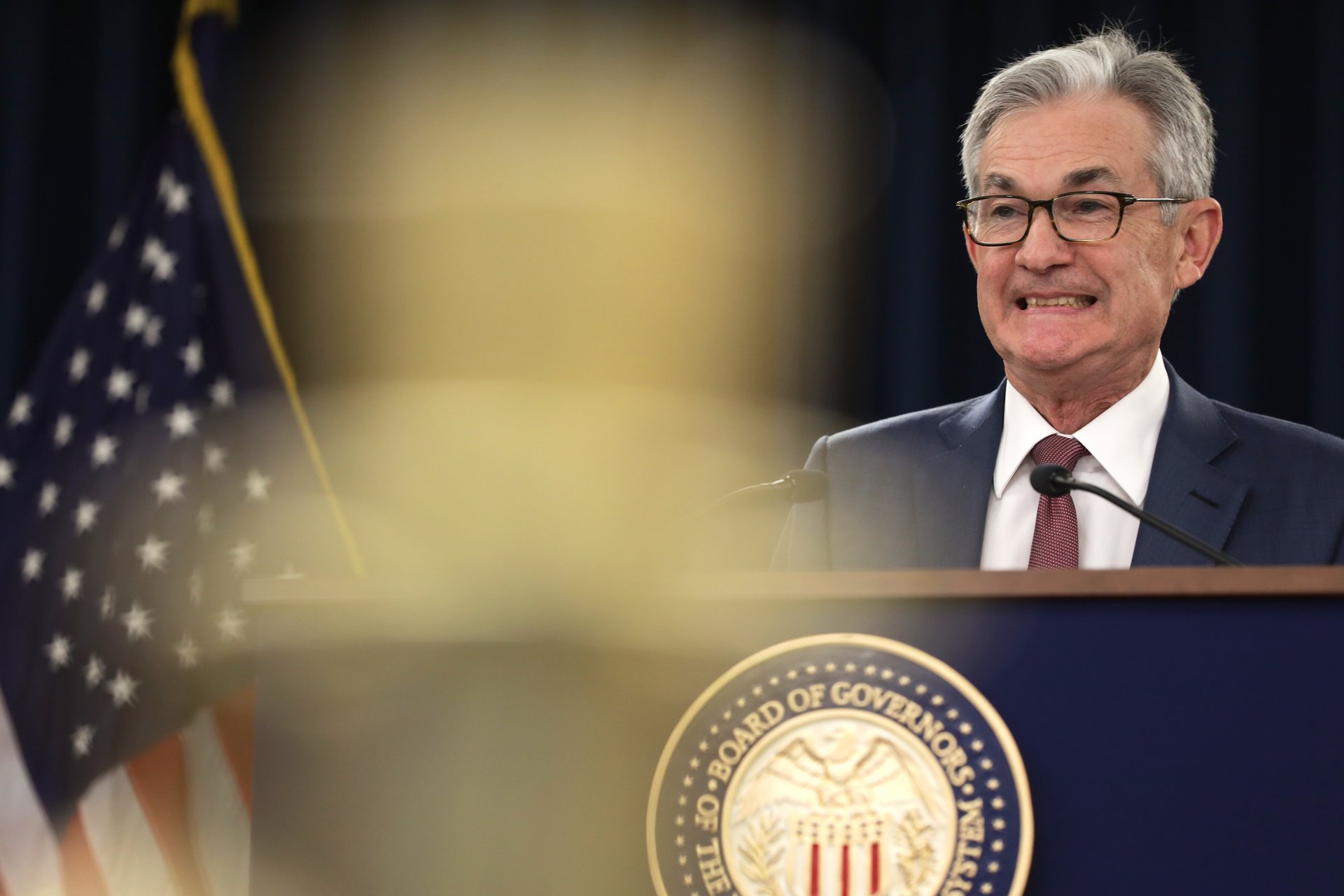The Fed is already too late to cut interest rates and now a crisis is brewing, strategist says
Jim Thorne of Wellington-Altus says the inverted yield curve speaks to a future recession — and that the Federal Reserve is too late to stop it

Jim Thorne, Chief Market Strategist at Wellington-Altus, spoke with Quartz for the latest installment of our “Smart Investing” video series.
Watch the interview above and check out the transcript below. The transcript of this conversation has been lightly edited for length and clarity.
ANDY MILLS (AM): The Federal Reserve has indicated they’ll probably do one interest rate cut this year, but with cooling consumer spending, do you see that thesis changing at all?
JIM THORNE (JT): Short-term money has a higher rate of interest than long-term money. The yield curve is inverted. That speaks to a recession. The old playbook is when you have that, you buy secular growth. What is secular growth? AI. None of this should be a surprise. Another thing I would suggest to you is in a society that is hooked on credit, which is what we have, interest rates are a price. Raising rates is inflationary. And anybody that’s taken an advanced course in macroeconomics knows this. So if the Fed wants to bring inflation down, they need to cut rates, they’re late, they know it. And anybody that believes that inflation, permanent inflation is a problem, I really think that they should look back at the theory. So the Fed has the theory to back them up. They have the data to back them up. Right? Harmonized CPI, which is when you take out real estate, the Fed is focused on the most lagging indicators. If you measure inflation like the Europeans do, we’re at 2%. So they’re making a big mistake this time. It’s not different.
AM: They’re being too cautious. Is that what the mistake is?
JT: There is an excessive amount of prudence and they need to stop. And you know, we can get into why I think that, but for now it’s why is the market going higher? ‘Cause they’re ignoring the Fed. Right? And so the question you have to ask yourself is, is there going to be a financial crisis?
AM: Is there gonna be a financial crisis?
JT: Never say never, right? I mean, look what happened in Europe with Macron losing the EU election and the spreads in debt. There’s a ton of debt out there. And so back in 2010, before the European debt crisis, it really didn’t start in Europe. It started in Dubai when they couldn’t refinance their debt because everybody got upset and woke up to the fact that Dubai was being used as a backdoor to circumvent U.N. sanctions into Iran. Dubai couldn’t finance their debt. Everybody got freaked out. And the next thing to fall was Europe and the pigs. And so in a world with an extreme amounts of debt, they are playing with fire. And there’s this old saying, to raise rates to stop inflation, it’s akin to putting gasoline on a fire to douse it. That’s where we are. So it’s very dangerous. So never say never. And so you have to be, you have to be cognizant of that, right? With so much debt. And so that’s okay, right? There’s always risks. And I think even though we’re very bullish for a structural run into the end of the decade, anything can happen, Andy. And you just have to be open-minded to that.
AM: In the stock market lately it has been paying to be optimistic. But to me it feels like there is a little bit of a fantasy land kind of scenario happening where it’s like the stock market’s ignoring the Fed, there’s global tensions everywhere. Interest rates remain high. Is there a reality that’s being ignored in the stock market right now? And what’s gonna bring it back?
JT: I’m concerned about ‘26. And the reason is, by that point in time, the Fed’s gonna splash their face with cold water and say, oh my gosh, and we’re gonna cut. Right? People think that cutting 25 basis points is going to solve the problems. No, it’s not. So what happens in ‘25 or late ‘26 when they un-invert the yield curve? So short rates are basically lower than long rates. Okay? So we have a steep yield curve, but yet maybe the AI trade’s gotten to the point where it needs to breathe for a while. And all of a sudden you get a rationalization fiscal policy. Government spending stops. Think about this, Andy, to have economic growth generated by government spending, government spending has to increase next year, not stay the same and not go down. So you get that, you get a growth scare. And then the real question is, well, the market’s ignore this difficult situation ‘cause everybody’s piled into Nvidia, Apple, Dell or will there be a general correction history says that there could be a general correction. I am very constructive into let’s say this time next year. And then we really have to wait and see to see what the valuations are like. Have the valuations got ahead of themselves? But at the same point in time, I think you need to understand that outta World War I, when we had the Spanish flu and we had a rationalization of fiscal policy coming outta World War I, we had the forgotten depression that everybody ignores. There is danger in the future and that’s why the Fed’s gotta start cutting rates now. And that’s why they have made a policy mistake. The cement is poured. People need to wake up and smell the coffee on that.
AM: Wow. There’s danger in the future. All right. Well thanks a lot Jim.